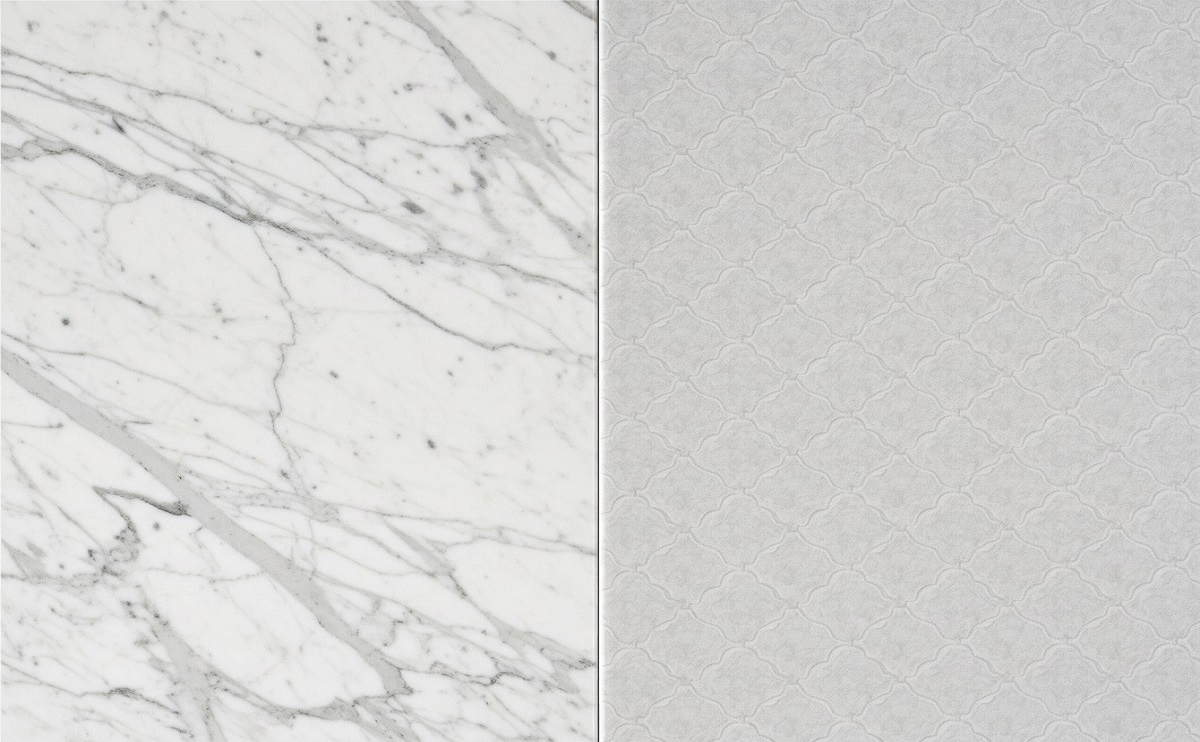Real Marble vs Fake Marble: 8 Things to Consider Before Buying
Marble is often regarded as the ultimate mark of elegance in home interiors, instantly adding a touch of timeless luxury to any space. But when it comes to choosing between real marble sheet and its more affordable alternatives—such as cultured or engineered marble—the decision isn’t always straightforward.
Suppose you’re planning a renovation or new build. In that case, you might be wondering: Is genuine marble truly worth the extra cost? Or can imitation marble deliver the same look without the maintenance headaches or price tag?
Whether you’re outfitting a kitchen, bathroom, or feature wall, understanding the differences between natural and synthetic options is key. In this guide, we break down eight essential considerations before you decide—so you can confidently choose the right material for your budget, style, and lifestyle.
For more information and to explore stylish marble sheet options, visit the Emu DesignBuild homepage.
| Feature | Real Marble | Fake Marble (Engineered) |
|---|---|---|
| Appearance & Veining | Unique, natural veining with one-of-a-kind patterns | Repeating patterns, less depth (high-quality versions can look realistic) |
| Durability | Softer, more prone to scratches, chips, and etching | Highly resistant to stains, scratches, and moisture |
| Maintenance | Requires sealing, gentle cleaners, and regular care | Low-maintenance, no sealing, easy to clean with standard products |
| Cost | More expensive (based on rarity and source) | Budget-friendly, mass-produced, affordable luxury look |
| Installation | Heavy, fragile, requires expert handling and time | Lightweight, easy to cut and install, quicker process |
| Eco-Friendliness | Finite natural resource, high environmental impact | Often uses recycled materials, less quarrying, lower waste |
| Best For | Living rooms, accent walls, low-traffic areas | Kitchens, bathrooms, high-traffic and wet spaces |
| Luxury & Resale Value | Adds high-end appeal and potential resale value | Visually appealing but may lack the prestige of natural stone |
Appearance & Veining: Can You Spot the Difference?
The most noticeable difference between real and fake marble lies in the veining. Natural marble features unique, irregular patterns formed by minerals over time—no two slabs are ever the same. In contrast, fake marble, whether made from PVC, porcelain, or engineered stone, often repeats patterns and lacks depth.
While high-quality engineered marble can mimic the look quite well, it rarely captures the organic fluidity of genuine stone. If visual authenticity is a priority for your space, real marble remains unmatched.
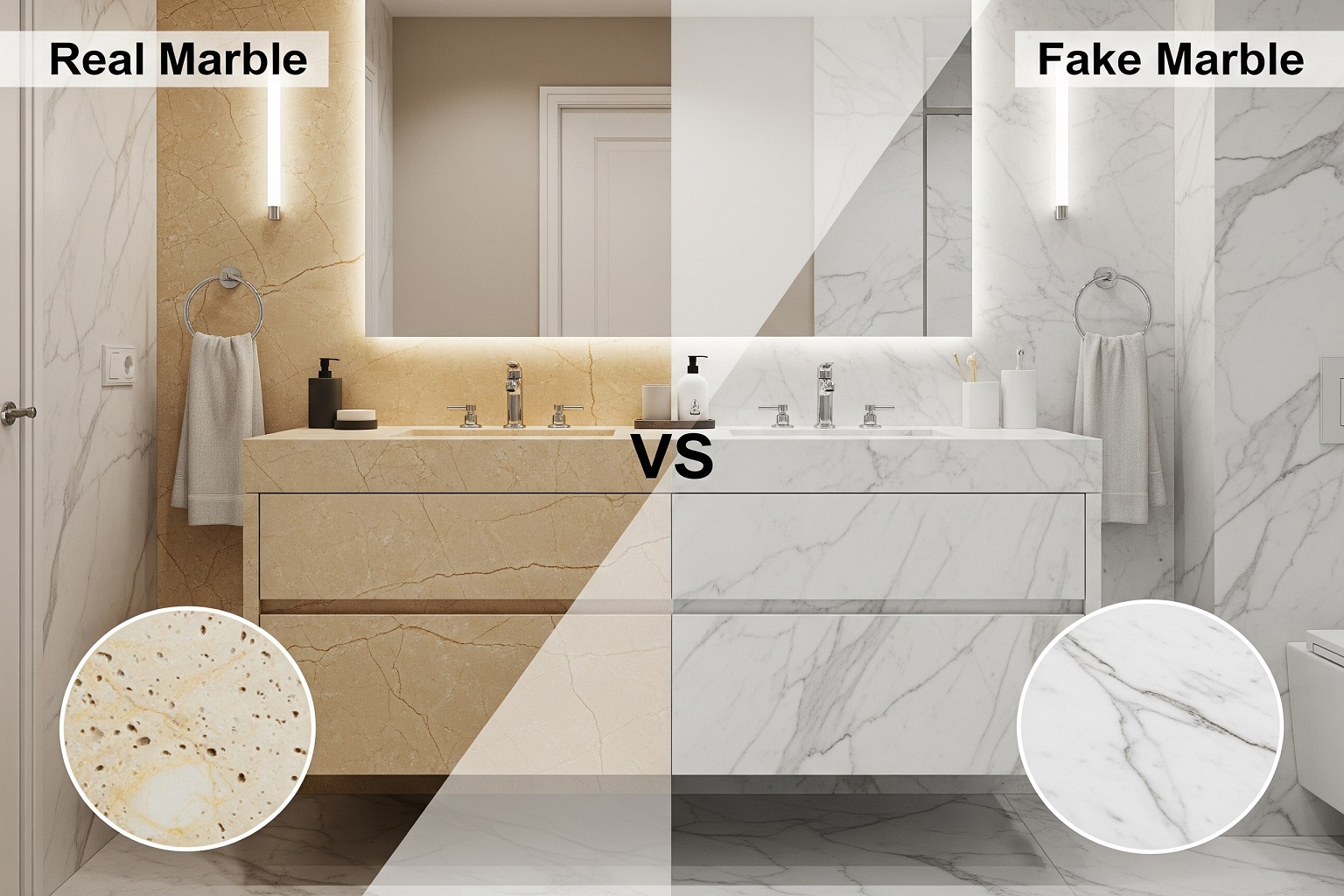
Durability and Longevity: Real Marble vs Fake Marble
When it comes to durability, fake marble—especially engineered stone—often has the upper hand. It is non-porous, more resistant to stains and scratches, and requires less maintenance, making it ideal for high-traffic or wet areas such as kitchens and bathrooms.
Real marble, while stunning, is softer and porous. It is more prone to etching, chipping, and water damage over time if not sealed and maintained regularly.
So, in the comparison of real vs fake marble, if long-term resilience with minimal upkeep is your goal, fake marble might serve you better. But for timeless charm and proper care, real marble can still last for generations.
Synthetic marble is a pocket-friendly and more durable alternative to natural marble. While natural marble is heat resistant and gives a lavish look, it quickly catches stains and is highly prone to discoloration. The non-porous nature of the artificial marble makes it easy to maintain.
Maintenance Needs: Real vs Engineered Marble
One of the most significant differences lies in maintenance. Natural marble is porous and needs regular sealing to prevent staining and etching. It also requires gentle cleaning products to avoid surface damage.
In contrast, engineered marble—a popular form of fake marble—is far easier to manage. It resists moisture, doesn’t require sealing, and can be cleaned with standard household products.
If low maintenance is a priority for your lifestyle, fake marble offers a hassle-free alternative.

Cost Comparison: What’s the Price of Beauty?
Cost is often a deciding factor. Natural marble is significantly more expensive due to the extraction, transportation, and labor-intensive installation involved. Prices also vary depending on rarity and origin.
On the other hand, engineered marble is a more affordable option with a similar aesthetic. It is manufactured at scale, lowering both production and installation costs—making it ideal for budget-conscious renovators seeking a luxury look.
If you’re balancing cost with style, fake marble may offer the best of both worlds.
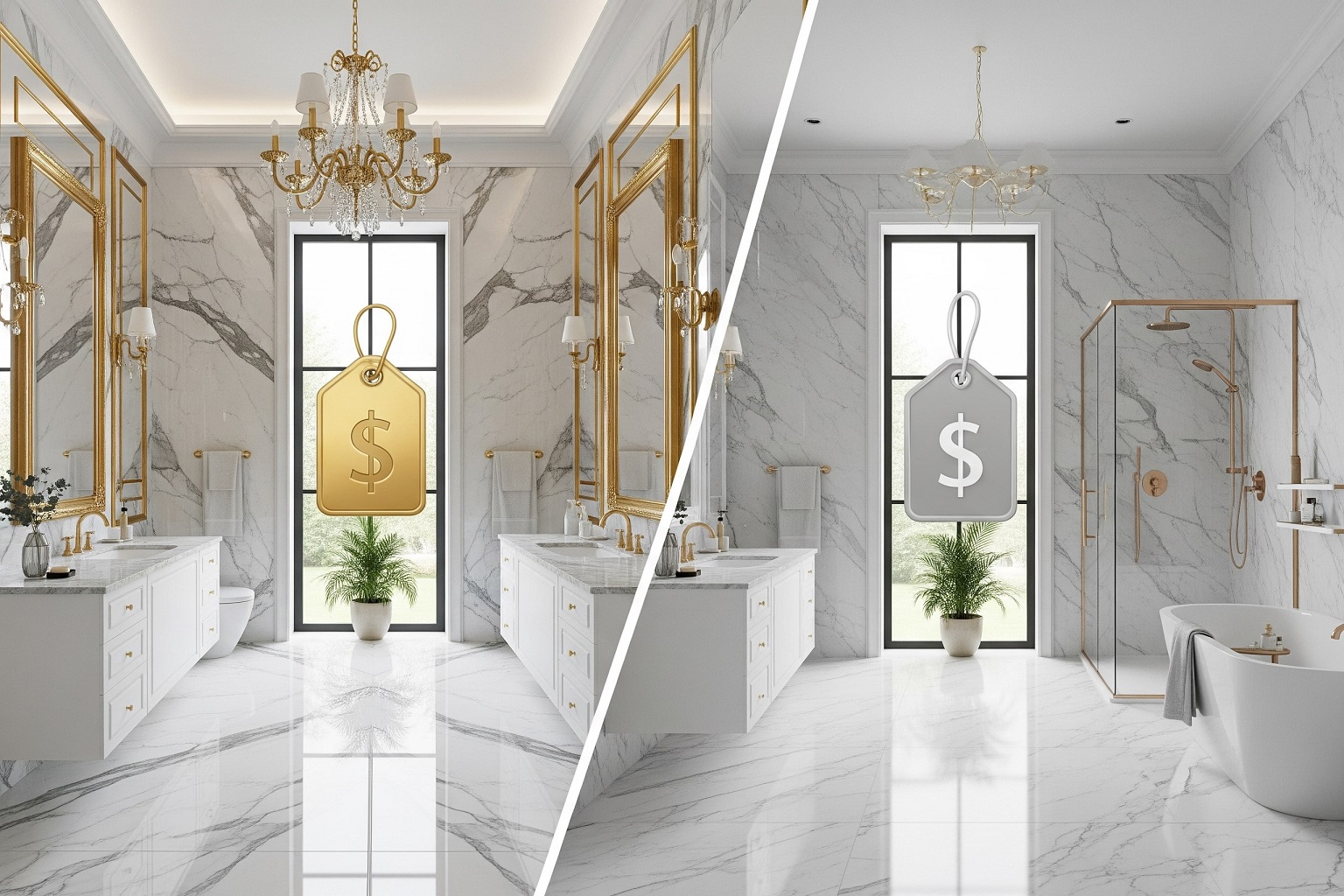
Installation Process: Real Marble vs Fake Marble
The installation process is another key consideration. Natural marble requires skilled professionals for cutting, sealing, and setting, as it is a heavy, fragile material that is prone to staining if not handled correctly. Installation can be time-consuming and labor-intensive.
In contrast, engineered marble is lighter, easier to cut, and often comes in pre-fabricated slabs or tiles. This makes the process quicker, simpler, and generally more cost-effective.
If ease and speed of installation are important to you, fake marble may be the more practical choice.
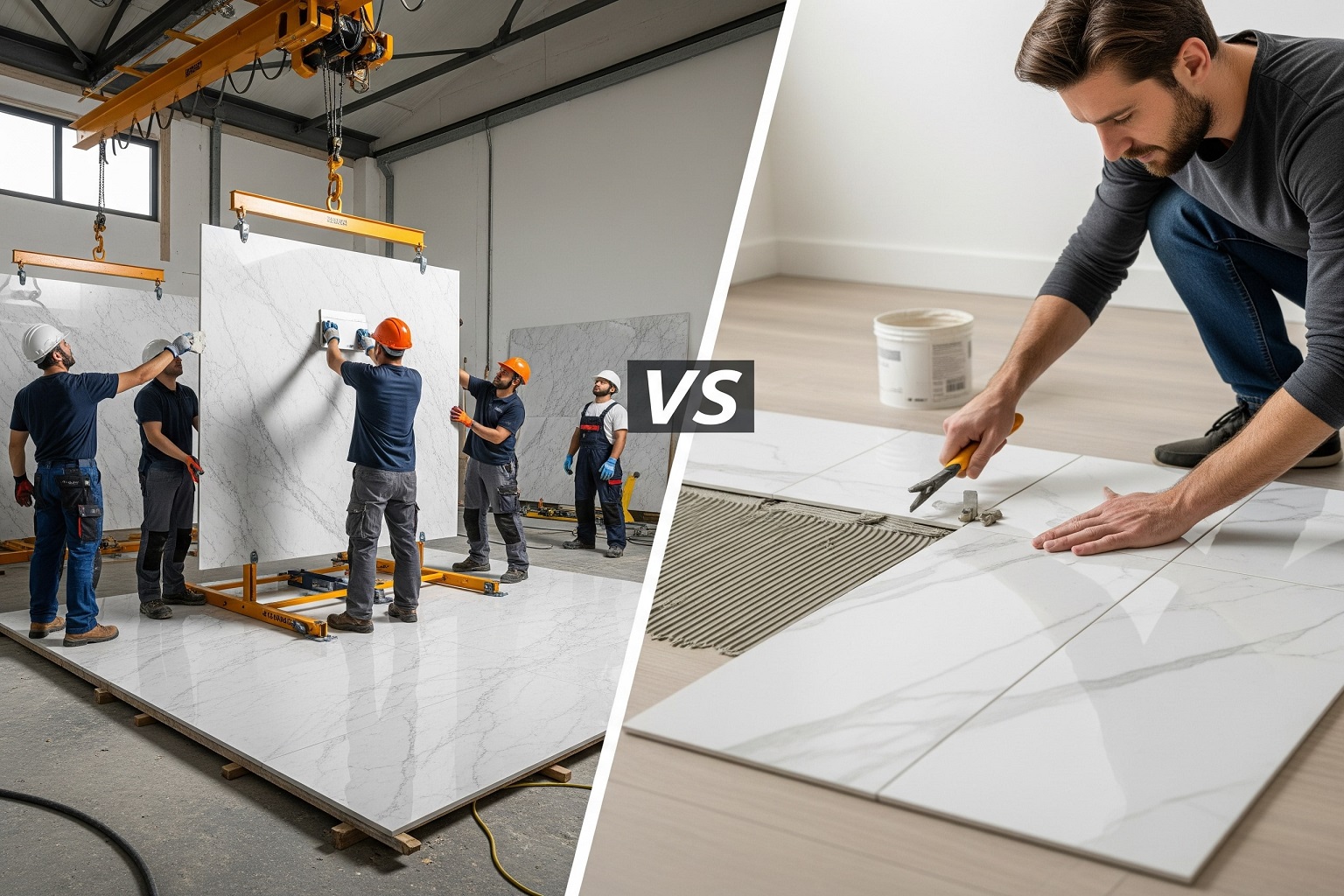
Eco-Friendliness and Sustainability Factors
The environmental impact of real marble versus fake marble isn’t black and white. Natural marble is a finite resource, and its extraction involves quarrying, which can result in land degradation, high energy consumption, and carbon emissions.
Engineered marble is produced using crushed stone and resin, often incorporating recycled materials. Although the manufacturing process also consumes energy and involves chemicals, it generally produces less waste and allows for more efficient resource use.
If sustainability is a key concern, engineered options may offer a lower environmental footprint—especially when sourced from eco-conscious manufacturers.
Suitability for Different Spaces (Kitchen, Bathroom, Living Room)
Space matters when choosing between real and engineered marble. In kitchens—where spills, heat, and heavy use are common—engineered marble is typically more practical due to its stain resistance and low maintenance. Natural marble, however, adds timeless elegance, making it a popular choice for living rooms and feature walls where wear and tear are minimal.
For bathrooms, both options are viable, but engineered marble excels in moisture resistance. Ultimately, your choice should be guided by the demands of each space and your aesthetic priorities.
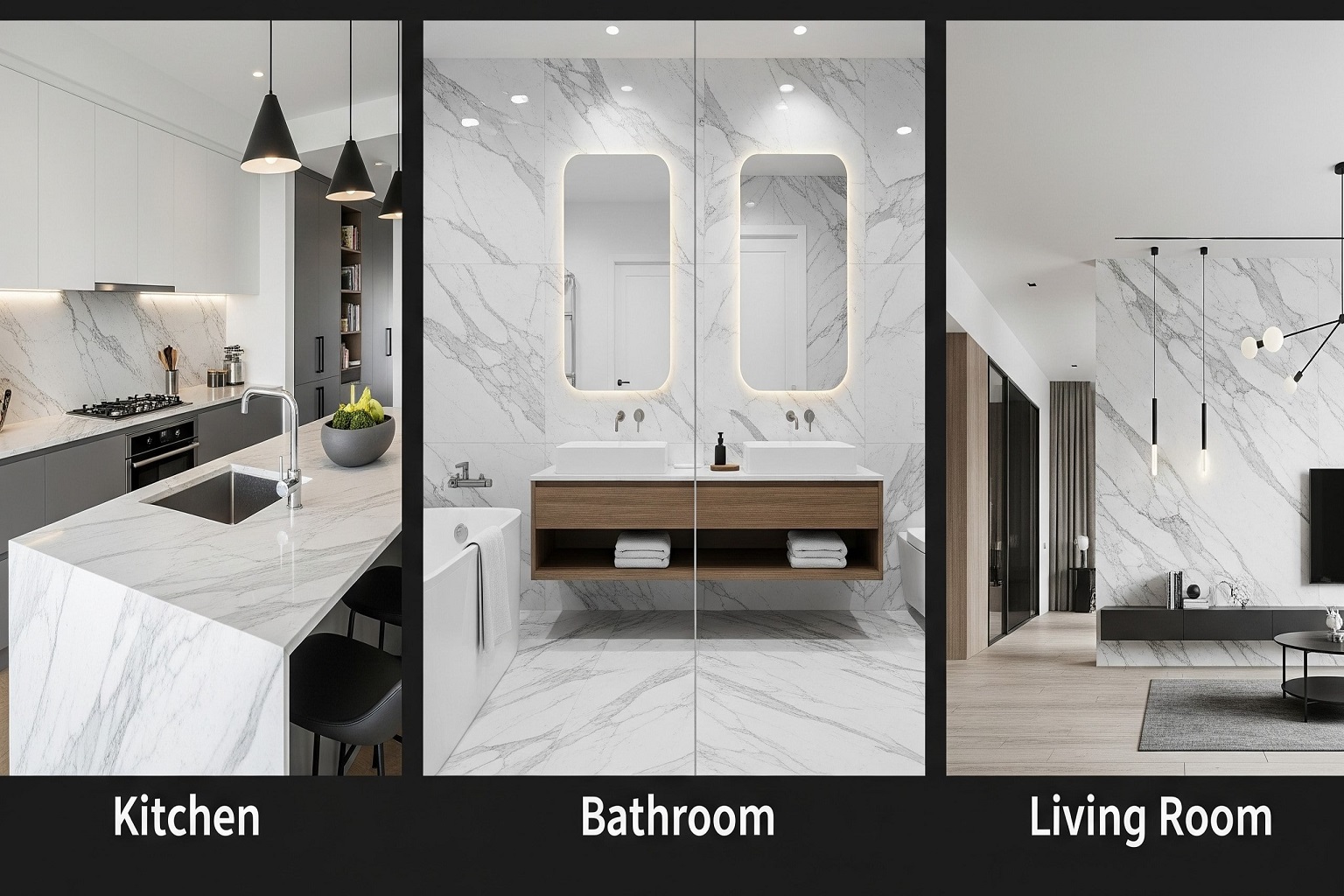
Resale Value and Perceived Luxury
Natural marble has long been associated with prestige and timeless elegance, often enhancing a property’s resale value. Its unique veining and organic appeal can impress potential buyers—especially in high-end markets.
While engineered marble can also enhance interiors beautifully, it may not carry the same weight in terms of perceived luxury. In the real marble vs fake marble conversation, if boosting your home’s market appeal is a priority, real marble often offers stronger returns, both visually and financially.
Conclusion: Which One Should You Choose?
There is no one-size-fits-all answer in the real marble vs fake marble debate. Your ideal choice depends on your budget, design goals, and the function of the space. Natural marble offers unmatched elegance and uniqueness, while engineered marble provides affordability and ease of care.
If you value authenticity and long-term investment, real marble might be worth it. But if practicality, consistency, and cost are your priorities, engineered marble could be the smarter choice.
Still unsure? Consult a trusted stonemason or interior designer.
Need expert help? Compare samples and visualize them in your space—whether browsing through emudesignbuild for inspiration or exploring various marble sheets options for your project.

